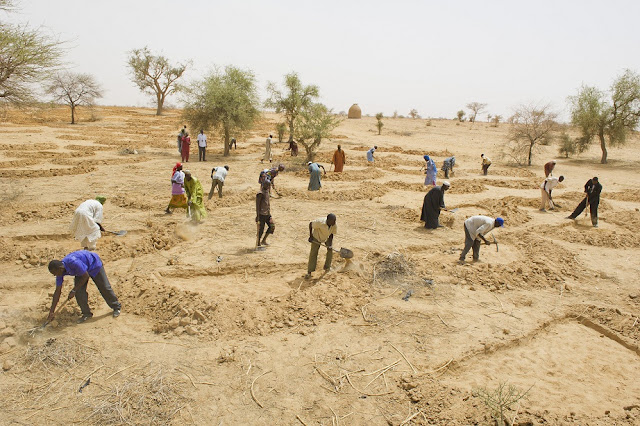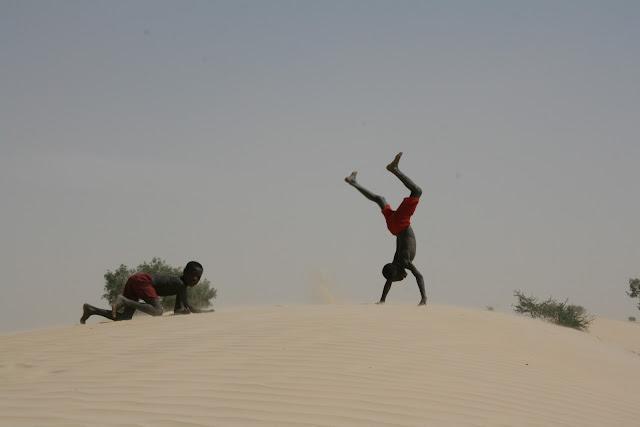Resilience in
Simple Terms- La Résilience en Termes Simples
L'assistance de la FAO à la région du Sahel, frappée par des sécheresses durant quatre des cinq dernières années, cible les personnes vulnérables afin qu'elles passent sans encombre la période de soudure tout en leur offrant la possibilité de renforcer leur résilience face à de futures situations d'urgence. Donnons la parole à quelques bénéficiaires rencontrés en juin 2012. Ils parlent de leurs espérances suite à l'appui dont ils ont bénéficié. Car lutter pour renforcer la résilience des populations, c'est aussi, en terme simples, redonner de l'espoir, faire en sorte que les bénéficiaires regardent vers l'avenir avec confiance.
Ouma Moussa affirme que la petite parcelle de 100m2 qu'elle cultive peut produire jusqu'à 70 kilos de pommes de terre, des choux, des laitues, des tomates et des poivrons.
Bien que les pommes de terre aient été introduites récemment au Sahel, "mes enfants les adorent", dit-elle. "Je les mets juste à bouillir."
Prochain objectif : acheter une vache




.jpg)



























